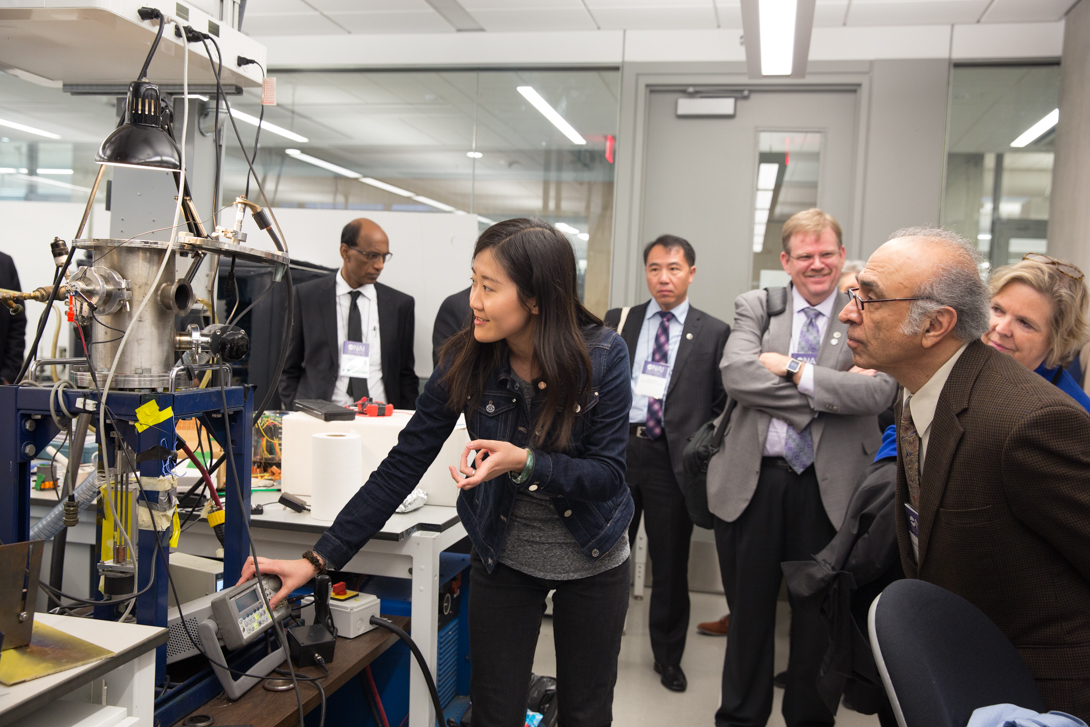By Ruth Steinhardt
The George Washington University hosted a range of innovators Thursday as attendees of the National Academy of Inventors’ 2016 conference gathered at Science and Engineering Hall for a networking luncheon and tour.
Nelson Carbonell, chair of the GW Board of Trustees, said the presence of NAI fellows for the program was a sign of the way the building has transformed GW’s potential as a site for STEM field research.
“We have capabilities here [at SEH] that are pretty rare in an urban research environment,” he said. “But it’s not really about that. It’s about the people.
“Our world is going to be a better place because people like you toil to make the innovations that make the world a better place, and we [at GW] want to have our part in that.”
Founded in 2010, NAI is a consortium of more than 3,000 patent-holding inventors associated with more than 200 academic and nonprofit institutions. Fellows of the academy have more than 20,000 patents between them. They are developing projects across the disciplines from new and more sustainable sources of rubber to innovative treatments for Alzheimer’s disease.
“Our world needs innovation, and the people in this room are having major impact,” said Steve Kubisen, managing director of the GW Technology Commercialization Office, who is a 2015 fellow of the academy.
Paul Sanberg, founder and president of NAI, said the organization was created with interdisciplinary collaboration in mind and to provide resources for innovators—just as SEH was.
“Our members want to move their universities…so that innovation becomes a big part of their culture,” he said. “To get your faculty and students to be innovators, you need to make them feel good about it. So that’s what we’re about and what this building is about.”
Attendees could tour three laboratory spaces in the hall: the Dowd Lab, where researchers create and evaluate molecules against specific biochemical targets, including malaria and tuberculosis; the Micropropulsion and Nanotechnology Laboratory developing plasma technology to help direct spacecraft and satellites; and the workspace of NAI Fellow Akos Vertes and his research group, who among other projects are developing new ways to quickly identify the chemical composition of a biological sample.
As they moved through the building, inventors shared ideas and commented admiringly on the building’s spaciousness and light. Mr. Carbonell remembered his own daughter, a Stanford graduate, being similarly struck when she visited the SEH.
“The faculty that we’re bringing in are of a caliber we could never have imagined, and most importantly, the students we have today in engineering and science and life science come here because they walk through this [building],” he said.


